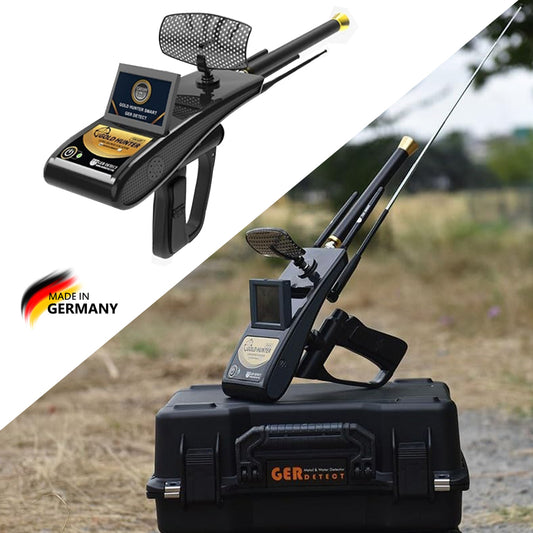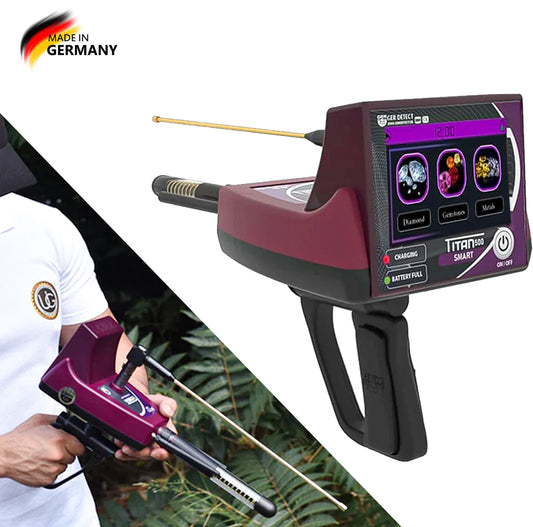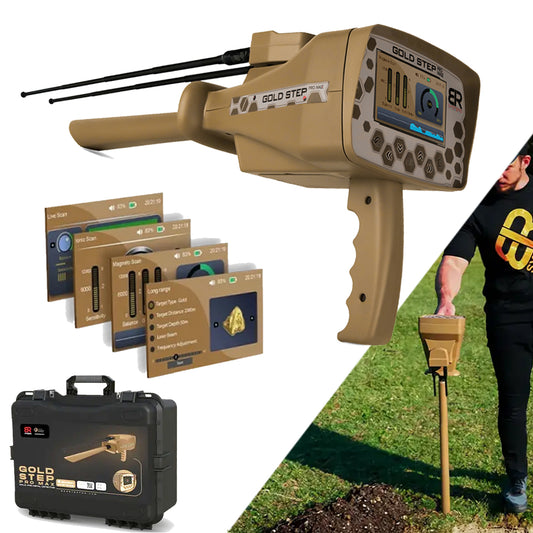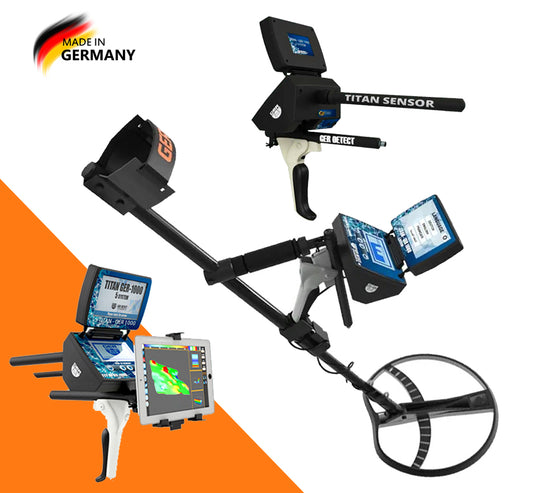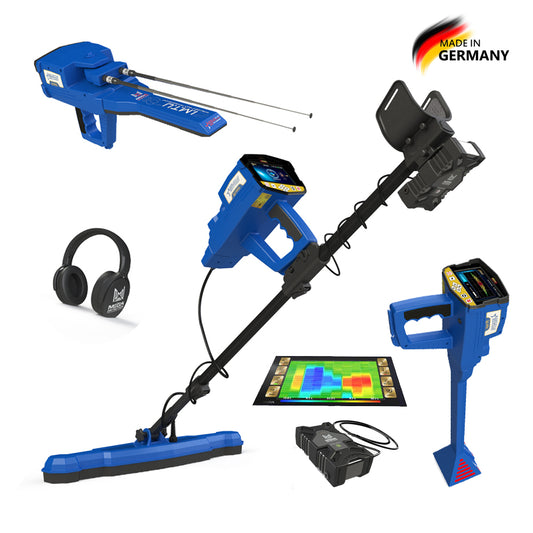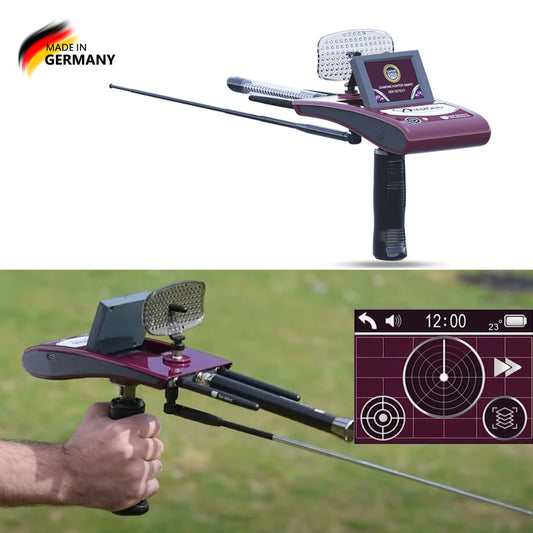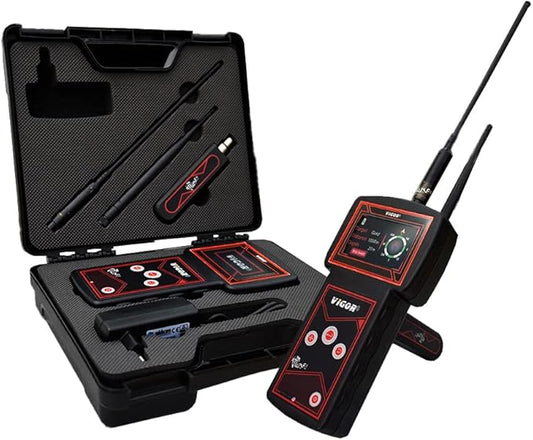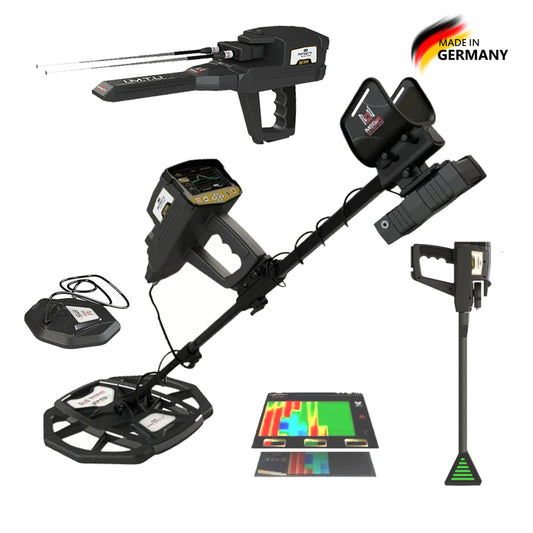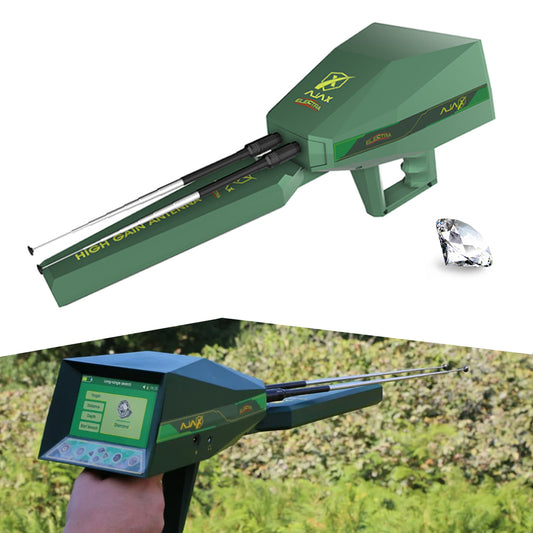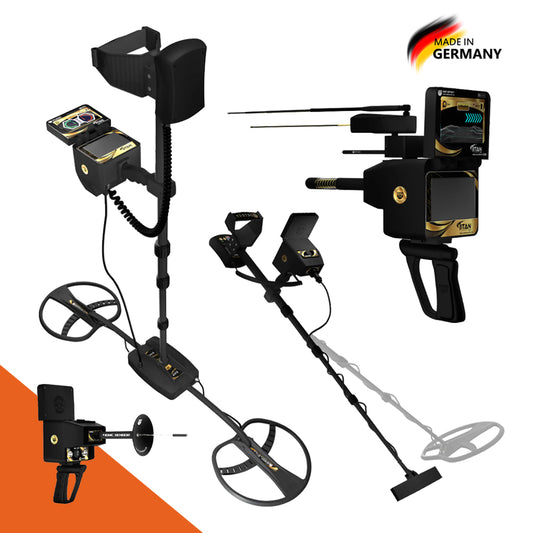-
GER Detect Gold Hunter Smart Long Range Metal Detector
Regular price $2,500.00Sale price $2,500.00 Regular priceUnit price per$2,874.00Sale -
GER Detect Titan 500 Smart Long Range Gold & Diamond Metal Detector
Regular price $3,950.00Sale price $3,950.00 Regular priceUnit price per$4,298.00Sale -
BR SYSTEMS Gold Step Pro Max Long Range Gold Detector
Regular price $5,599.98Sale price $5,599.98 Regular priceUnit price per$6,874.00Sale -
GER Detect Titan 1000 Long Range Metal Detector with 8" and 17" Coils
Regular price $7,999.00Sale price $7,999.00 Regular priceUnit price per$14,220.00Sale -
Mega Detection Gold Star 3D Scanner Metal Detector
Regular price $9,300.00Sale price $9,300.00 Regular priceUnit price per$13,970.00Sale -
GER Detect Diamond Hunter Smart Long Range Pro Detector
Regular price $2,250.00Sale price $2,250.00 Regular priceUnit price per$2,987.00Sale -
MWF Vigor Long Range Device Metal Detector
Regular price $2,250.00Sale price $2,250.00 Regular priceUnit price per$2,987.00Sale -
Mega Detection Infinity Max Pro Metal Detector
Regular price $12,500.00Sale price $12,500.00 Regular priceUnit price per$15,970.00Sale -
Ajax Electra Diamond and Gemstone Detector
Regular price $4,100.00Sale price $4,100.00 Regular priceUnit price per$4,825.00Sale -
GER Detect Titan X13 Professional Detector
Regular price $13,000.00Sale price $13,000.00 Regular priceUnit price per$14,220.00Sale
Long Range Metal Detector Q&A
What is a Long-Range System?
Long range systems (also called LRLs: Long-Range Locators) are detectors designed to detect targets at considerably greater distances and depths than standard metal detectors. They often claim to scan across large areas, hundreds of meters or more, by transmitting and receiving signals through antennas or sensor arrays.
How they operate:
- They typically emit an electromagnetic wave or field (rather than the near-surface magnetic field of a conventional coil) and then interpret reflections or perturbations from buried conductive objects or anomalies in the ground.
- The user often “grids” or sweeps a wide area, looking for directional signals or changes in the device’s readings that guide them toward a target.
- Key features include: adjustable front-range settings (e.g., 500 m, 1000 m, 1500 m…), depth claims, and target-type selection in interface menus.
Typical strengths:
- Widely marketed for large-scale exploration (gold veins, buried caches, tunnels) across large tracts of land.
- Often used in open fields, remote areas, or where covering large surface area is required.
Limitations / Considerations:
- The science behind many long-range locator claims is controversial or disputed. Some users and experts suggest many “long-range” claims are not consistently supported by empirical evidence.
- Soil conditions, object size, conductivity, and interference all majorly affect accuracy.
What is an Ionic System?
An ionic system is a specific detection technology used in some advanced detectors which is claimed to detect ionic fields or changes in ionization around buried targets (metal objects, voids, etc.). It is distinct from traditional coil‐based electromagnetic detection or even some long range models.
How it operates:
- The device’s sensor/analyzer detects disturbances in ionic fields or ionization gradients around buried conductive or metallic targets. For example, buried metal may cause a local ionic change or field which the sensor picks up.
- Interfaces typically show signal strength bars, indicators for ionic field strength, and use high-gain antennas or sensors tuned to capture these subtle ionic signatures.
- The user often focuses on small shifts in ionic field indicators rather than just metallic reflections.
Typical strengths:
- Marketed for detecting metal targets, voids, cavities, or ancient relics even when they’re deeply buried or under disturbed ground.
- Often paired with other systems (long-range, imaging) to offer multi-technology detection.
Limitations / Considerations:
- Again, the scientific validation of “ionic” detection for buried targets is not always clear in independent testing.
- Users must typically calibrate the system carefully to soil and terrain to reduce false readings.
What Is the Bionic System?
The Bionic System is a long-range gold detection technology that combines bio-energy interaction with magnetic field measurement.
It’s used in some high-end detectors, especially from OKM and a few Ajax or BR Systems devices.
Unlike traditional detectors that rely only on electromagnetic or ionic signals, the Bionic System is designed to work in harmony with the human body’s natural electric field.
That’s why it’s sometimes described as a “bio-energy gold detection system.”
How the Bionic System Works
- The device emits low-frequency magnetic signals tuned to specific materials (e.g., gold).
- These signals interact with surrounding magnetic fields in the environment.
- The system also measures how the operator’s bio-energy field responds to the reflected signals.
- When both the environmental and bio-energy responses “resonate” with the target’s frequency (such as gold), the detector indicates a potential detection zone.
Example Use Case
Let’s say a prospector is searching for freshly buried gold that hasn’t been in the ground long enough to create ionic energy.
An Ionic System wouldn’t pick it up, but a Bionic System could still detect the resonance between the gold’s magnetic signature and the environment.

Why Choose Our Long Range Gold Detector ?
Our Long Range Gold Detector collection is designed for treasure hunters, prospectors, and professionals who need to cover vast areas and reach extreme depths. Customers choose our long range metal detectors because they combine cutting-edge long distance detection technology with reliability and ease of use. With the ability to locate gold, silver, gemstones, and hidden treasures from far distances, these detectors save time and increase accuracy in the field.

